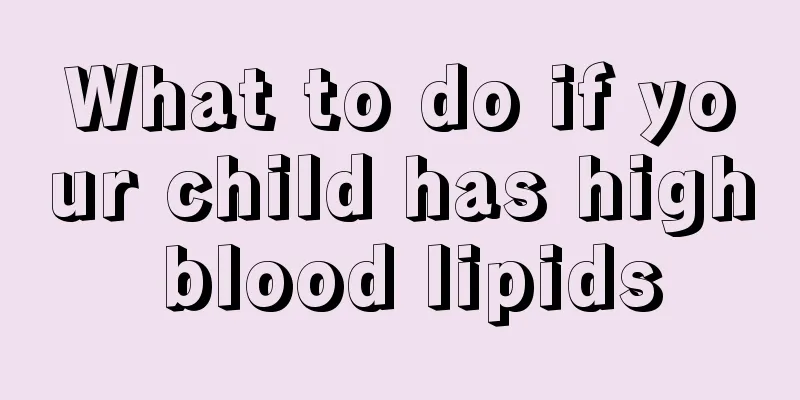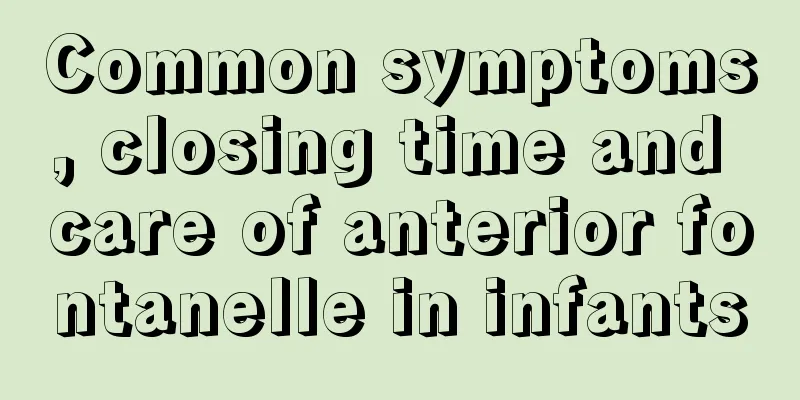What to do if your child has high blood lipids

|
What worries parents most during their children's growth process is their children's health. High blood lipids in children is a problem that troubles many parents, especially since the children are relatively young and cannot take medication blindly. Once their diet is controlled, they worry that their children will not get enough nutrition, so parents are particularly worried. When such symptoms occur, they must master the methods to adjust. Let's learn about what to do if children have high blood lipids. What to do if your child has high blood lipids Children should not abuse lipid-lowering drugs Since high blood lipids are very common in children, how can we detect it? In fact, not all children with high blood lipids have high blood cholesterol when they grow up, and children with normal blood lipids may also develop hyperlipidemia when they grow up. Conducting blood lipid tests on all children and adolescents will label many adolescents with diseases prematurely, causing unnecessary anxiety and worry to them and their families, and may lead to children abusing lipid-lowering drugs. Pediatricians should routinely check cholesterol in children who have a family history of the disease or whose parents or grandparents had heart disease at an early age. The opinions also recommend that children with unknown family medical history, overweight or obese children should undergo regular cholesterol checks. If dietary intervention is ineffective, medication should be used How to treat dyslipidemia in children? The treatment of dyslipidemia in children is different from that in adults. First of all, special emphasis should be placed on dietary therapy. Dietary intervention is the basis for the treatment of hyperlipidemia, especially for pediatric patients, dietary treatment may be the best choice. Children who do not respond to dietary therapy and require drug treatment should also continue with dietary intervention to make the treatment effective and lasting. When conducting dietary therapy, the first thing to emphasize is the diversity, comprehensiveness, balance and quality of food. The second is to ensure normal growth and development, avoid insufficient or excessive energy (calorie) intake, and maintain an ideal body weight. Third, the preschool period is an important period that determines a person’s lifelong eating habits, and a healthy eating pattern should be adopted. Fourth, quitting smoking and drinking, exercising moderately and maintaining psychological balance are also beneficial to cardiovascular health and normal blood lipid metabolism, and must be paid attention to in the prevention and treatment of hyperlipidemia in children. Regarding drug treatment for dyslipidemia in children, the original recommendation was that for children over 10 years old, if dietary treatment for 6 months to 1 year is ineffective, medication can be considered if the blood lipids are very high. The experts suggested that drug treatment is usually suitable for children aged 8 years and above who have high levels of low-density lipoprotein cholesterol in their bodies and are also obese and have high blood pressure. This is the first time the American Academy of Pediatrics' Committee on Nutrition has explicitly recommended that children so young take such medications. Lipid-lowering drugs are generally safe for children Several lipid-lowering drugs are approved for use in children, and more and more people are taking them. Bile acid sequestrants have few side effects and are easily accepted by children, but their clinical efficacy has been found to be poor. Statins have satisfactory therapeutic effects without obvious toxic side effects. The effectiveness and safety of statins in children and adolescents are similar to those in adults. The results of statin treatment for children and adolescents with familial or severe hypercholesterolemia are also satisfactory. The resin-based drugs recommended in the past have better safety and reliability for short-term use. The following points should be noted when children use lipid-lowering drugs: First, they should not be abused. Only a small number of children and adolescents will use drug treatment. Second, while carrying out drug treatment, dietary intervention treatment should be continued to make the treatment effective and lasting. Third, children and adolescents who receive drug treatment should be monitored and followed up regularly to examine the efficacy. Fourth, its treatment must be carried out under the guidance of a specialist, starting with a small dose. The above is an introduction to what to do if your child has high blood lipids. After understanding it, we know that high blood lipids have a great impact on children, so parents must take their babies to the hospital for examination and treatment in time. In addition, you can give your baby more vegetables and fruits in daily life, and take your child to the outdoors for more activities, which will have a good effect on alleviating high blood lipids. |
<<: What to do if your baby has a heart valve defect
>>: What to do if blisters appear on your child's feet
Recommend
Why do newborn baby's nails turn black?
Friends who have taken care of children know that...
What are some ways to grow taller at the age of 12?
People with short stature always look like childr...
Why does my child’s lips become red and chapped?
As autumn approaches, many parents have a worry: ...
What causes acne in children?
It is normal for adults to get acne because their...
Two and a half year old baby often has fever
Two and a half year old baby often has fever If a...
Causes of joint cracking in children
If we observe the physical development of childre...
What are the benefits of circumcision for little boys?
As people in modern society pay more and more att...
What should I do if my child walks with his legs splayed? Use these three tips to prevent it
When many children walk, their feet naturally spr...
What are the medicines for bed-wetting?
Bedwetting can happen at any age, but the highest...
Measles usually occurs after fever
Most of the time, the problem of growing rashes o...
What causes acidic stool in babies?
If a baby has acidic stools, parents will definit...
Why is it that babies wake up easily when they sleep?
Babies have just come into this world and don’t k...
Can children eat candy when they have a cough?
Candy is a kind of snack that many children like ...
How to treat spleen and stomach deficiency in a 6-year-old child?
Although people's quality of life is graduall...
How long should babies take cod liver oil?
Children's health is always the most concerne...









